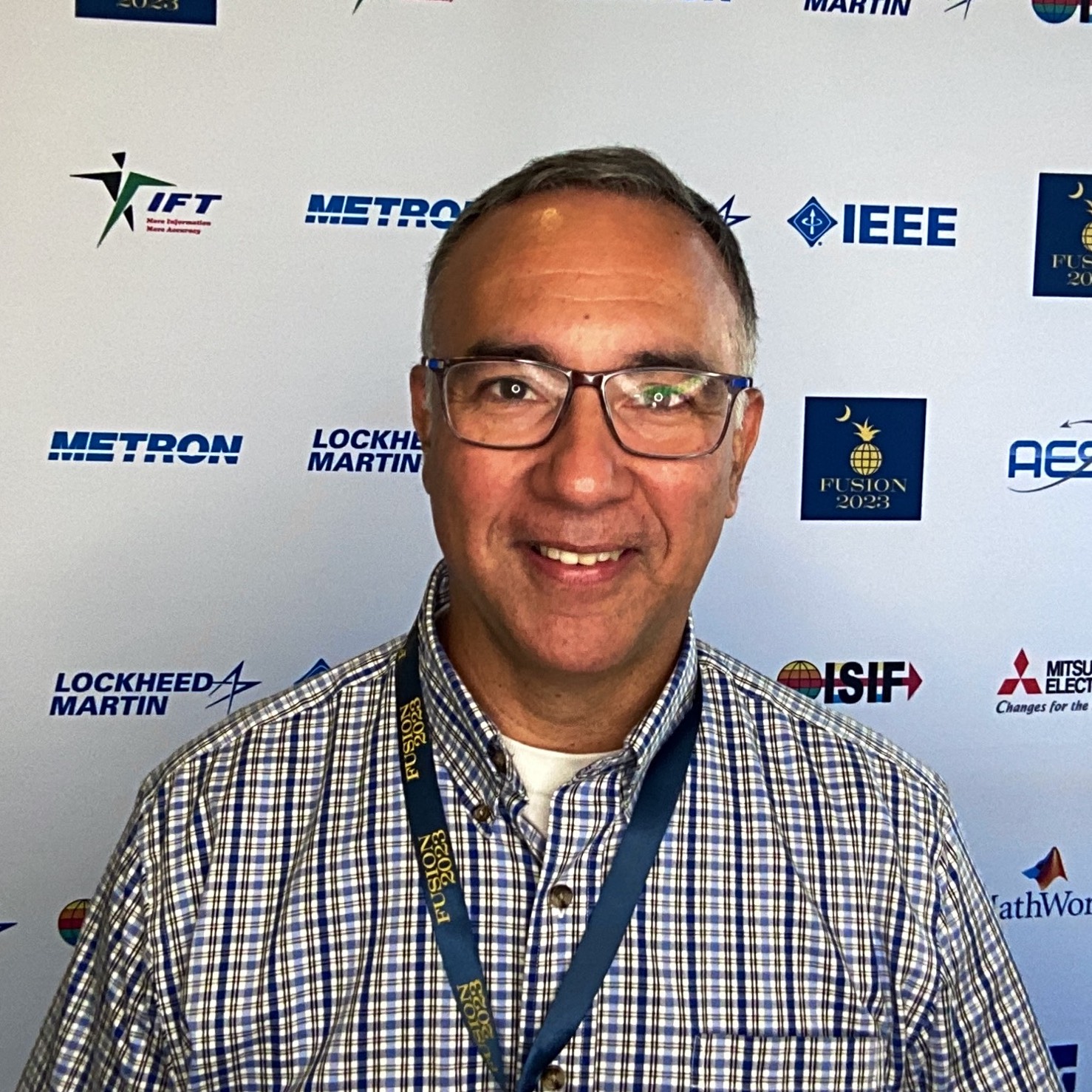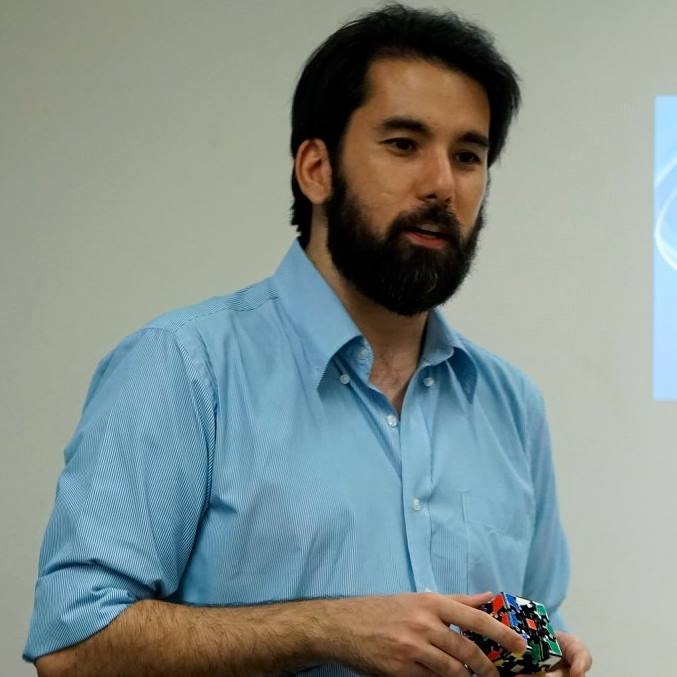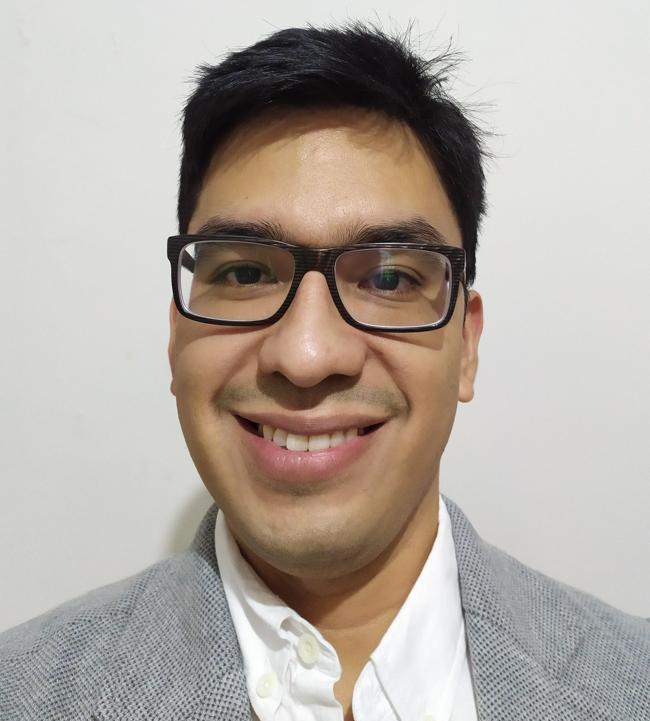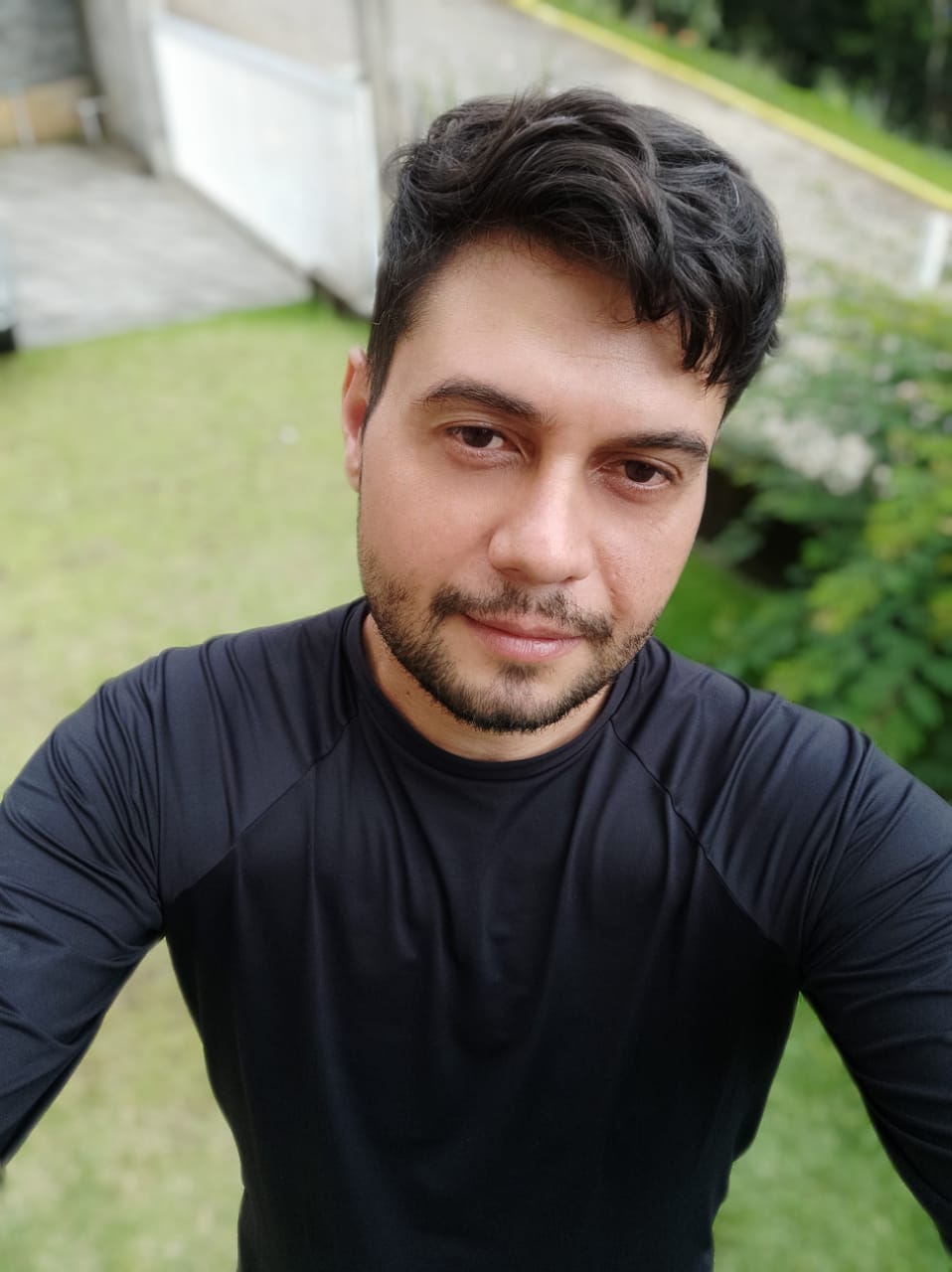
The Second Latin American Workshop on Information Fusion (LAFUSION 2024) is a workshop focusing on the latest research results on the Information Fusion in Latin America. The goal of this workshop is to create a community of Information Fusion researchers in Latin America. Accepted papers will be published in IEEE. Authors of accepted papers are expected to present their work in a plenary session as part of the main workshop program. Proceedings will be indexed in the IEEE Digital Library, SCOPUS, and other prominent digital libraries.
Information fusion is a multidisciplinary field that focuses on combining and integrating information from diverse sources to improve the accuracy, completeness, and reliability of the resulting information. It involves the process of merging data or knowledge from multiple sensors, databases, or information systems to generate a unified and coherent representation of the underlying reality.
The main goal of information fusion is to extract meaningful and actionable insights by leveraging the strengths of individual information sources while compensating for their limitations, uncertainties, or redundancies. It aims to provide a more comprehensive and accurate understanding of a given situation or phenomenon than what can be achieved by using individual sources in isolation.
Information fusion techniques typically involve various processes, including data preprocessing, feature extraction, data association, probabilistic modeling, decision-making, and knowledge representation. These processes may utilize methods from diverse disciplines such as statistics, signal processing, pattern recognition, artificial intelligence, machine learning, and cognitive science.
Applications of information fusion are widespread and can be found in fields such as surveillance and intelligence, remote sensing, robotics, autonomous systems, medical diagnosis, weather forecasting, transportation systems, and cybersecurity. By integrating and interpreting information from multiple sources, information fusion enables improved situational awareness, decision-making, and prediction capabilities, leading to enhanced performance, efficiency, and reliability in complex and uncertain environments. Several Latin American problems could be solved by Information Fusion. We are looking to form a Forum to debate the usage of Information Fusion to produce solutions for the challenges in the region.
LAFUSION will have two types of submissions: (I) tutorial and (II) workshop papers.
Tutorial proposals may cover the areas listed in the general Call for Papers (theory and representation, algorithms, modeling simulation and evaluation and applications), as well as other areas where information fusion can or should be applicable. Examples include but are not limited to fusion of human-produced and unstructured information, big data analytics, information fusion in cloud computing, information fusion applied to cybersecurity, as well as artificial intelligence and machine learning solutions to those.
Proposals should be submitted as PDF files to lafusion2025@labnet.nce.ufrj.br. A proposal needs to contain:
• The title of the proposed tutorial;
• The intended audience and prerequisites for the attendees’ background knowledge;
• A description of the tutorial including the learning objectives and a short summary of the material to be presented;
• Biographical sketch(es) of the instructor(s) including previous lecture and tutorial experience.
For further information, please contact us via lafusion2025@labnet.nce.ufrj.br.
The second type of submission is the workshop papers (2-4 Pages). Authors of accepted positions and regular papers are expected to present their work in a plenary session as part of the main workshop program (hybrid). Accepted regular papers will be published in IEEE. Proceedings will be indexed in the IEEE Digital Library, SCOPUS, and other prominent digital libraries.
Workshop papers must be original (i.e., not previously published) and not currently under review by any other conference or journal. Submissions related to the featured topic are especially welcome, but all other submissions in the scope of Information Fusion are equally welcome. All submissions will be evaluated based on the same criteria. All submitted papers must conform to the IEEE conference template. LAFUSION 2024 will adopt a double-blind review process for regular papers. Authors must make a good faith effort to anonymize their submissions to ensure that their identities are not disclosed to reviewers, and reviewers are discouraged from actively working to uncover author identities. Submitting to arXiv (or similar) is allowed to promote early dissemination, provided cross-citations are not made.
You can submit your paper through: https://openreview.net/group?id=ufrj.br/UFRJ/Lafusion/2024/Workshop
Instructors:
Pablo Rangel holds a Ph.D. and a Master’s degree in Engineering from the Federal University of Rio de Janeiro, as well as a Bachelor’s degree in Computer Science. Dr. Rangel is a researcher at the Brazilian Navy Research Institute (IPqM), where he works on several projects in the areas of Command and Control, Tactical Systems, Navigation Systems, Combat Systems, and Simulators.
As a researcher, he has published scientific articles on Software Engineering, Artificial Intelligence, and Data Fusion, both in Brazil and internationally, in addition to articles for scientific dissemination. As a software engineer, he has led the development of complex systems for various sectors of the Brazilian Navy.
Dr. Rangel also serves as a professor at Estácio de Sá University and Infnet Institute in Brazil, teaching courses in both undergraduate and postgraduate programs. With extensive experience at Estácio de Sá University, Dr. Rangel served as head of the Information Systems program and designed the Software Engineering bachelor’s course. He also creates IT training content, consults in technology, and reviews textbooks. Dr. Rangel is the author of Object-Oriented Systems: Theory and Practice with UML and Java, published by Brasport in Brazil.
José Gomes de Carvalho Júnior holds a Ph.D. in Engineering from the Federal University of Rio de Janeiro, a Master’s degree in Engineering from Fluminense Federal University, and a Bachelor’s degree in Electronic Engineering from the Federal University of Rio de Janeiro. Dr. Gomes is well-known for his contributions to the Brazilian Navy across various areas, including Command and Control, Tactical Systems, Navigation Systems, Combat Systems, and Simulators.
With over 40 years as a Senior Researcher at the Brazilian Navy Research Institute, he has contributed extensively in fields such as artificial intelligence, data and information fusion, and other subjects related to military applications.
Dr. Gomes also served as a Full Professor at Estácio University and several other institutions for over 25 years, teaching courses at both undergraduate and postgraduate levels. He is the co-author of the book Object-Oriented Systems: Theory and Practice with UML and Java, published by Brasport in Brazil.
Intended audience: Students, professionals and researchers interested in starting in the field of data and information fusion.
Abstract:
Information Fusion have been the focus of various applications over many years. The increasing volume of information with different natures and granularities, ranging from raw data to knowledge, combined with high-speed connectivity and bandwidth, demands solutions capable of processing and merging data from diverse sources. The core concept of data and information fusion involves generating concise, supportive outputs that transform complex scenarios into understandable, accurate, precise, and smarter results, creating high-level abstractions that enhance the decision-making process.
Information Fusion is widely applied in military fields. The fusion of sensors (such as radars) and high-level information (such as contextual information) has significantly enhanced the capabilities of tactical and command control systems, directly impacting military operations. Moreover, the impact of Data and Information Fusion extends beyond military applications and affects society in various ways. With the rise of Industry 4.0 and emerging technologies over the past decade—such as the Internet of Things (IoT) and mobile devices—many everyday and industrial applications now require solutions that share similar demands with military systems. In this context, this tutorial aims to provide an overview of Data and Information Fusion concepts, showcasing examples and applications. The tutorial will also explore the remaining challenges in the field and introduce candidate techniques for addressing them. Additionally, it will highlight the role of Artificial Intelligence in the field of Data and Information Fusion.
Attendees prerequisites:
• Familiarity with common terms and concepts in computer science and computer engineering;
• Beginners are truly welcome!
Learning goals:
• General concepts, including the JDL model
• Understanding time, space, and contextual constraints
• Presenting techniques commonly used at different levels of fusion
Instructors:
Stiven Schwanz Dias received the bachelor's degree in Computer Engineering from Universidade Federal do Espírito Santo, Vitória, Brazil, in 2006, the master's degree in Aeronautical Engineering from Instituto Tecnológico de Aeronáutica (ITA), São José dos Campos, Brazil, in 2008, and the Ph.D. degree in Electrical and Computer Engineering from ITA in 2014. His main research interests include distributed estimation in sensor networks, Bayesian inference, and machine learning. Dr. Dias has been with Eindhoven University of Technology (TUe) since September 2021 as a Machine Learning Lecturer, where he has supervised several graduation projects mainly focused on anomaly detection and prediction applications. From 2008 through 2021, Dr. Dias worked for the Embraer group as System Engineer Specialist designing coastal surveillance applications and as a Research Engineer developing advanced data fusion systems for embedded command and control (C2) systems. Since February 2023, Dr. Dias has rejoined Embraer S.A. as a Data Fusion Research Engineer to lead R&D projects.
Intended audience: Bayesian practitioners focused on distributed estimation tasks e.g. cooperative localization and distributed target tracking.
Abstract:
The factor-graph is a powerful tool to properly model distributed estimation problems. In this tutorial, we briefly introduce factor-graphs and the sum-product-algorithm (SPA) as the state-of-the-art framework for performing distributed/cooperative estimation tasks. Then, we show how to employ this framework to solve two practical applications. Specifically, we present a distributed factor-graph-based algorithm (CoopTAN) for anchorless cooperative aircraft localization in a GNSS-denied scenario without relying on any ground infrastructure. The agents use Terrain Aided Navigation (TAN) to perform local position estimation and exchange messages to improve their local position beliefs. Lastly, we introduce a joint cooperative localization and distributed target tracking algorithm (J-CoopTAN-DistTT), which is an extended version of the previous one to also handle a non-cooperative target. In this new scenario, the agents need to self-localize while also tracking a single target. For both algorithms, we show how to design a suitable message-passing scheme to enable cooperation between multiple agents through a partially connected communication network with limited bandwidth.
Attendees prerequisites:
• A solid Bayesian filtering background;
• Some knowledge on multi-agent systems or sensor networks is welcome;
• Notions of self-localization and target tracking problems.
Learning goals:
• Introduce the belief propagation framework;
• Review two message-passing algorithms to solve practical applications.
Instructors:
Rui Rodrigues de Mello Júnior received a bachelor's degree in Computer Science with an emphasis on software development from the Catholic University of Petropolis – UCP (2004), a Master's degree (2015), and a Doctorate (2022) in Systems and Computer Engineering from the Federal University of Rio de Janeiro – PESC/COPPE/UFRJ. His main research interests include computer architecture, parallel computing models, distributed algorithms, and high-performance computing. He is a Lieutenant Commander in the Brazilian Navy and has been with the Brazilian Navy Research Institute since 2006. Currently, he is the Head of the Digital Systems Group at the Brazilian Navy Research Institute.
Intended audience: Researchers focused on parallel computer architecture and distributed computing.
Abstract:
GAMMA (General Abstract Model for Multiset Manipulation) was proposed as a formalism to program specification based on parallel multiset rewriting. This model can be seen as an abstract chemical machine that provides a metaphor for chemical reactions, where all actions (chemical reactions) occur freely and naturally on a single database (chemical solution) called a multiset. In this tutorial, we briefly introduce GAMMA and its similarity to the Dataflow computational model, using the GFlow conversion tool. We also present a brief representation of a target tracking data fusion method, called PPDE, using GAMMA syntax. Finally, we demonstrate GSink, the first implementation of a GAMMA program execution environment, which allows the parallel execution of instances of several reactions based on scheduling by edge reversal in an acyclic directed graph.
Attendees prerequisites:
• A solid background in computer architecture;
• Some knowledge of parallel programming is welcome;
• Basic understanding of graph theory and target tracking problems.
Learning goals:
• Introduce the GAMMA formalism;
• Present the similarities between GAMMA and Dataflow;
• Highlight the potential of GAMMA for use in data fusion applications.
Instructors:
Claudio Miceli de Farias received his Doctorate, Master and Bachelor degree in Computer Science from the Federal University of Rio de Janeiro in 2014, 2010 and 2008 respectively. In 2015, he started working at the same University. Since then professor Claudio has joined several projects regarding wireless sensor networks, Internet of Things, Cloud Computing and Data analysis. Two of the most interesting projects are the Nautilus UAV, a low-cost Underwater Autonomous Vehicle, and minerva rockets, a prototype rocket. He has also won a prize in Brazil for developing IoT devices for farms to analyze milk quality in real time. Professor Claudio is also responsible for coordinating undergrad activities at the Tárcio Pacitti Institute of Applied Computational Research. He has also advised several master and PhD students. He has collaborated with several entities such as the Rio de Janeiro City hall, Embraer, Kontron and others. His main research projects nowadays are on applying Machine Learning/ DataFusion techniques on Computer Networks - mostly on IoT networks. Claudio's research interests include Data fusion, security, cloud computing, robotics, wireless sensor networks and Internet of Things.
Intended audience: People who can benefit from this tutorial are e.g. researchers, system designers and developers from industry and academia working in the following areas: Information fusion in general, Machine Learning, Internet of Things and decision support systems.
Abstract:
The Internet of Things (IoT) is a novel paradigm that is grounded on Information and Communication Technologies (ICT). Recently, the use of IoT has been gaining attraction in areas such as logistics, manufacturing, retailing, and pharmaceutics, transforming the typical industrial spaces into Smart Spaces.
Traditional machine learning algorithms may not be suited for resource-constrained scenarios. TinyML emerges as a viable solution by optimizing ML algorithms and models for efficiency and deploying them directly on microcontrollers or other lowpower processors, TinyML enables on-device inference without relying on cloud-based servers. For tinyml, the employment of Data fusion techniques is useful to further compress models, combine data sources, clean data reducing decisions response times, and enabling more intelligent and immediate situation awareness. This tutorial aims to show the tinyml algorithms in the multisensor data fusion context, both theoretically and in practice.
Attendees prerequisites:
• Solid knowledge of machine learning concepts;
• Familiarity with data and information fusion, IoT concepts, Industry 4.0, and their applications;
• Strong programming skills.
Learning goals:
• Introduce the Smart Spaces scenario, including its emergence, advantages, and challenges;
• Show how traditional machine learning methods can be limited in certain scenarios;
• Explain how multisensor data fusion methods can aid TinyML;
• Present examples using FreeRTOS, MicroPython, TensorFlow Lite for Microcontrollers, and a simulation example from the agricultural industry.
This roundtable aims to foster an interdisciplinary dialogue on the complex interactions between artificial intelligence (AI), data governance, sovereignty, and ethics within the unique socio-political contexts of Latin America. The central objective of this conversation is to dialogue with scholars, practitioners, and policymakers seeking to understand the nuances of technological transformation in Latin America. By bridging the disciplines of engineering, sociology, and philosophy, the discussion promises to offer both critical theoretical insights and practical recommendations for ethical AI and data governance.
André Magnelli holds a Ph.D. (2011–2015) from the Institute of Social and Political Studies of the State University of Rio de Janeiro (IESP-UERJ). He is the founder and director of Ateliê de Humanidades, an independent institution dedicated to research, writing, and education. Magnelli also serves as the editor of Ateliê de Humanidades Editorial, the podcast República de Ideias, and the forum Fios do Tempo, which offers analyses of contemporary issues. Since 2019, he has organized the “Humanities Cycle: Ideas and Debates in Philosophy and Social Sciences,” hosted by the French Consulate in Rio de Janeiro. He is the author of Durkheim, Despite the Century: New Interpretations Between Philosophy and Sociology (Annablume, 2018), An (Un)finished Democracy (Ateliê de Humanidades, 2019), and Cartographies of Critique (Ateliê de Humanidades, 2019). Magnelli also conceived, edited, and revised the Brazilian edition of Bruno Latour’s Facing Gaia (published as Diante de Gaia by UBU Editora and Ateliê de Humanidades in 2020). His research spans social theory, technoscience and society, historical political sociology, anthropological theory, ethics, political philosophy, and rhetoric.
Leopoldo Lusquino Filho is an assistant professor in the Department of Control and Automation Engineering at São Paulo State University (Unesp) and a visiting researcher at the Recod.AI lab at the Computing Institute of the University of Campinas (Unicamp). He holds a bachelor’s degree in Computer Science (2012) from the Federal University of Rio de Janeiro (UFRJ), where he also completed his master’s (2017) and Ph.D. (2021) in Systems Engineering and Informatics. Lusquino pursued a postdoctoral fellowship (2021–2022) at the Computing Institute at Unicamp. He is an associate researcher at the Applied Research Center in Artificial Intelligence for Industry 4.0 and the Center for Social Housing Development in São Paulo State. His research focuses on AI applications across diverse fields, including climate change mitigation, consciousness studies, epidemiology, medical diagnosis, renewable energy, and digital games.
Authors: Luca Mascarenhas Plaster, Aldo André Díaz Salazar
Authors: Julio Cesar M. dos Anjos R., Rosa M. M. Leão, Pablo Rangel
Authors: Vinicius dos Santos Silva, Carla A.D.M Delgado
Authors: Débora Eliane Soares de Souza Batista, Aldo André Diaz Salazar
Authors: Luis Eduardo Pessoa, Cristóvão F. Iglesias Jr, Claudio Miceli de Farias
Authors: Rafael Schneider, Cláudio André da Silva Alves, Laura Silva de Assis, Claudio Miceli de Farias, Israel Mendonca dos Santos, Pedro Henrique González
Authors: Miriana Russo, Corrado Santoro, Federico Fausto Santoro, Alessio Tudisco
Authors: Pedro Henrique Britto Aragão Andrade, Ricardo Ribeiro Rodrigues, Renato Laffranchi Falcão, Joras Custodio Campos de Oliveira, José Fernando B. Brancalion, Fabricio Barth
Authors: Eduardo Redondo, Diego H. Stalder, Alejandro Giangreco, Maria Lucila Gonzalez Donna
Speakers:
Gaurav Srivastava is a senior cybersecurity consultant with Siemens Corporation. He has a background in vulnerability management, incident handling, and industrial control systems. He holds certifications including Certified Information Security Manager (CISM) and Global Industrial Cyber Security Professional (GICSP) and has experience in areas like vulnerability management, software transparency, incident response. Gaurav earned a Master’s degree in Computer Science from Technical University of Munich, Germany and has worked with organizations such as Siemens for the past 8+ years, where he served as a security consultant and research professional. His academic experience includes time as a visiting research scholar at Carnegie Mellon University, where he worked on privacy concerns in Android applications.
Daniel Sadoc Menasché received the Ph.D. degree in Computer Science from the University of Massachusetts, Amherst, in 2011. Currently, he is an Associate Professor with the Computer Science Department, Federal University of Rio de Janeiro, Brazil. His interests are in modeling, analysis, security and performance evaluation of computer systems, being a recipient of best paper awards at GLOBECOM, CoNEXT, INFOCOM and ICGSE. He is an alumni affiliated member of the Brazilian Academy of Sciences.
Abstract:
In the cybersecurity domain, fusing information from heterogeneous sources is critical for timely and effective threat detection and mitigation. This talk presents findings from a large-scale measurement campaign aimed at analyzing temporal and contextual information associated with software vulnerability events. By curating data from diverse platforms—including websites, forums, and aggregators—we extract and study time series reflecting the flow of security advisories across the cybersecurity landscape. Our analysis reveals the distinct roles platforms play, from originating vulnerability information to fusing and redistributing it.
Beyond temporal fusion, we emphasize the importance of contextual fusion, as software vulnerabilities are inherently tied to product-specific characteristics. Vulnerability properties and severity assessments, such as CVSS scores, must account for the context of the affected products. To this end, we investigate how different sources parametrically differ in severity scoring and identify latent patterns that reveal the impact of product context. By analyzing data from the National Vulnerability Database (NVD), we uncover statistical distinctions, such as Industrial Control System (ICS) products exhibiting higher attack complexity and more restrictive attack vectors compared to general products. Furthermore, leveraging a Large Language Model, CVSS-BERT, we demonstrate the ability to predict product-specific CVSS scores from textual descriptions. This highlights the potential for semi-automated vulnerability assessments that adapt to diverse product settings and contexts.
By integrating these insights, we showcase the dual importance of fusing temporal and contextual information in cybersecurity. Our findings provide a foundation for optimizing information-sharing strategies while ensuring vulnerability data remains tied to its product context, enabling faster, more accurate responses to emerging threats.
Authors: Ana Corica, Patricia Sureda, Veronica Parra, Silvia Schiaffino, Daniela Godoy
Authors: Pedro Cesar Madureira de Godoy Camargo, Leopoldo André Dutra Lusquino Filho, Sidney Alves de Outeiro, Daniel Rodrigues Teixeira Macedo, Gustavo Ryo Yazaki Grillo, Kailani de Assis Tavernezi Rodrigues, Felipe Pellegrini Kumagae
Authors: Paulo Fernando Leite Filho, Silvio de Barros Melo, Rita de Cassia-Moura do Nascimento
Authors: E. Sebastian Marin Mendoza, Jose Rios, Diego H. Stalder, Francisco Gonzalez, Juan Carlos Miranda, Laura Gonzalez
Probability theory, Bayesian inference, argumentation, Dempster-Shafer theory, possibility and fuzzy set theory, rough sets, logic fusion, preference aggregation, decision theory, random sets, finite point processes and others.
Probability theory, Bayesian inference, argumentation, Dempster-Shafer theory, possibility and fuzzy set theory, rough sets, logic fusion, preference aggregation, decision theory, random sets, finite point processes and others.
Cognitive methods, signal processing and localisation, recognition, classification, identification, nonlinear filtering, data association, tracking, prediction, situation/impact assessment, alignment and registration, pattern/behavioural analysis, image fusion, fusion architectures, resource management, machine learning and artificial intelligence, topic modelling, natural language processing, contextual adaptation, anomaly/change detection.
Soft-hard fusion, autonomous systems, defence/security, robotics, intelligent transportation, mining/manufacturing, wireless sensor networks, economics, finance, fintech, environmental monitoring medical care/e-health, bioinformatics, radio astronomy, critical infrastructure protection, condition monitoring precision agriculture, video streaming, streaming and sketching and other emerging applications.
Sequential inference, data mining. graph analysis, ontologies/semantics, modelling/realisation/evaluation, target/sensor modelling, benchmarks/testbeds, trust in fusion systems, computational methods, cloud/edge computing/fusion, fusion performance.

George Mason University, USA

Federal University of Rio de Janeiro, Brazil

Eldorado Institute, Brazil

Federal University of Goiás, Brazil

Brazilian Navy Research Institute, Brazil
Universidade de Lisboa, Portugal
EMBRAER S.A, Brazil
CS Group, France
Polytechnic Institute of Bragança, Portugal
Federal University of Rio de Janeiro, Brazil
Rice University, United States
Independent consultant, USA
ISISTAN Research Institute (UNCPBA/CONICET), Argentina
Federal University of Rio de Janeiro, Brazil
Universidad Nacional de San Agustin de Arequipa, Peru
CEFET-RJ, Brazil
Petrobrás, Brazil
Federal University of Rio de Janeiro, Brazil
Fluminese Federal University, Brazil
Universidad de Alcalá, Spain
Federal University of Rio de Janeiro, Brazil
ISEN, France
EMBRAER S.A, Brazil
Tecnologico de Monterrey, México
Federal University of Rio de Janeiro, Brazil
George Mason University, USA
Army Research Laboratory, USA
University of Udine, Italy
Fluminense Federal University, Brazil
São Paulo State University, Brazil
Federal University of Rio de Janeiro, Brazil
São Paulo State University, Brazil
Brazilian Navy, Brazil
Federal University of Rio de Janeiro, Brazil
Federal University of Rio de Janeiro, Brazil
Federal University of Rio de Janeiro, Brazil